 Windows can become corrupt due to a variety of reasons, ranging from a corrupt Registry to malware infections. You may lose access to your data if Windows refuses to boot. So, how do you recover data from the corrupted OS in this case? Well, you need to first fix the issue, and then use a good data recovery program to get back your data. We explain how to do this, in the sections below.
Windows can become corrupt due to a variety of reasons, ranging from a corrupt Registry to malware infections. You may lose access to your data if Windows refuses to boot. So, how do you recover data from the corrupted OS in this case? Well, you need to first fix the issue, and then use a good data recovery program to get back your data. We explain how to do this, in the sections below.
Table of Contents
What Causes a Corrupt Operating System
Before fixing the corrupt operating system and recovering data from it, you should know what caused the problem. This will help you identify the appropriate solution and determine when it’s best to avoid do-it-yourself methods.
Use the table below as a guide:
| Reason | Description |
| 📄 Corrupted Windows Registry | The Windows Registry stores the configuration settings for Windows and its applications. If sensitive Registry entries are deleted or corrupted, the OS will become corrupt and refuse to boot. System optimizers and cleaners are common culprits behind a corrupt Windows Registry. |
| 🕷️ Malware attack | Computer viruses and other malware can delete or corrupt critical system files, resulting in a corrupted Windows OS. Sometimes, antivirus programs fail to remove malware in time, causing a partially functional OS. |
| 🖥 Hardware issues | A corrupt OS could be the result of malfunctioning or failing core hardware–the HDD/SSD, motherboard, RAM, or processor. It’s best to contact an expert if you suspect that OS corruption was caused by a hardware issue. |
| 👤 Human error | Often, human errors like powering off the PC directly without first shutting it down from the Start button, and force-ending a troubleshooting wizard can corrupt Windows. |
How to Fix a Corrupted Operating System
Broadly speaking, there are two paths you can go by when attempting to fix a corrupted operating system—attempt to fix or restore the OS, or reinstall the operating system entirely.
Regardless, it’s advisable to create Windows installation media before proceeding with the fixes below. You can use the Windows installation media to boot into the Windows Recovery Environment (WinRE) if the installed copy of Windows is unable to do so. If you’re unable to fix Windows, you can use the installation media to reinstall the OS.
Preparations Before Repairing a Corrupt OS
To fix a corrupt OS, you will need to access the Command Prompt, and System Restore. But, how do you launch Command Prompt, or System Restore in a corrupt OS? Here are three possibilities and what to do in each case:
- Windows can boot: In this case, first use one of these Microsoft recommended ways to boot into Safe Mode with Networking. Once you’re in Safe Mode with Networking, search for “cmd” in Windows Search (Windows Key + S), right-click on Command Prompt, and choose Run as administrator to launch the Command Prompt. To open System Restore, simply search for it in Windows Search (Windows Key + S).
- Windows only boots into the Recovery Environment: If Windows only boots into the blue “Choose an option” screen, it means that Windows’ recovery partition is intact, but the OS is not bootable. Fortunately, you can run Command Prompt from the Recovery Environment and fix your OS using the DISM and SFC commands. Simply go to Troubleshoot > Advanced options > Command Prompt. The Advanced Options menu will also contain an option to launch System Restore.
- Windows doesn’t boot into the Recovery Environment: Here, you’ll need to use Windows installation media to enter WinRE and launch the Command Prompt. To do so, connect your installation media to your PC, and start the computer. Click on the Repair your computer option when you see the Install Windows screen. Your PC will boot into the Recovery Environment, where you can use Troubleshoot > Advanced options > Command Prompt to launch CMD. To use System Restore, choose the respective option in the Advanced Options screen.
Now, let’s take a look at the fixes:
Method 1: Use the System File Checker (SFC) and DISM
Deployment Image Servicing and Management (DISM) and System File Checker (SFC) are both command-line tools that repair the corrupt Windows system image, and system files respectively. To run these utilities, you’ll need to use Command Prompt (CMD).
Here’s how to use DISM and SFC to potentially fix an OS that’s corrupted:
- Open Command Prompt.
- Type
DISM /Online /Cleanup-Image /ScanHealthin the console and press Enter. The DISM utility will scan the Windows image. This may take a while.
- If the DISM scan shows some missing/damaged files, type
DISM /Online /Cleanup-Image /RestoreHealthto fix the system image. You will need an active internet connection for this.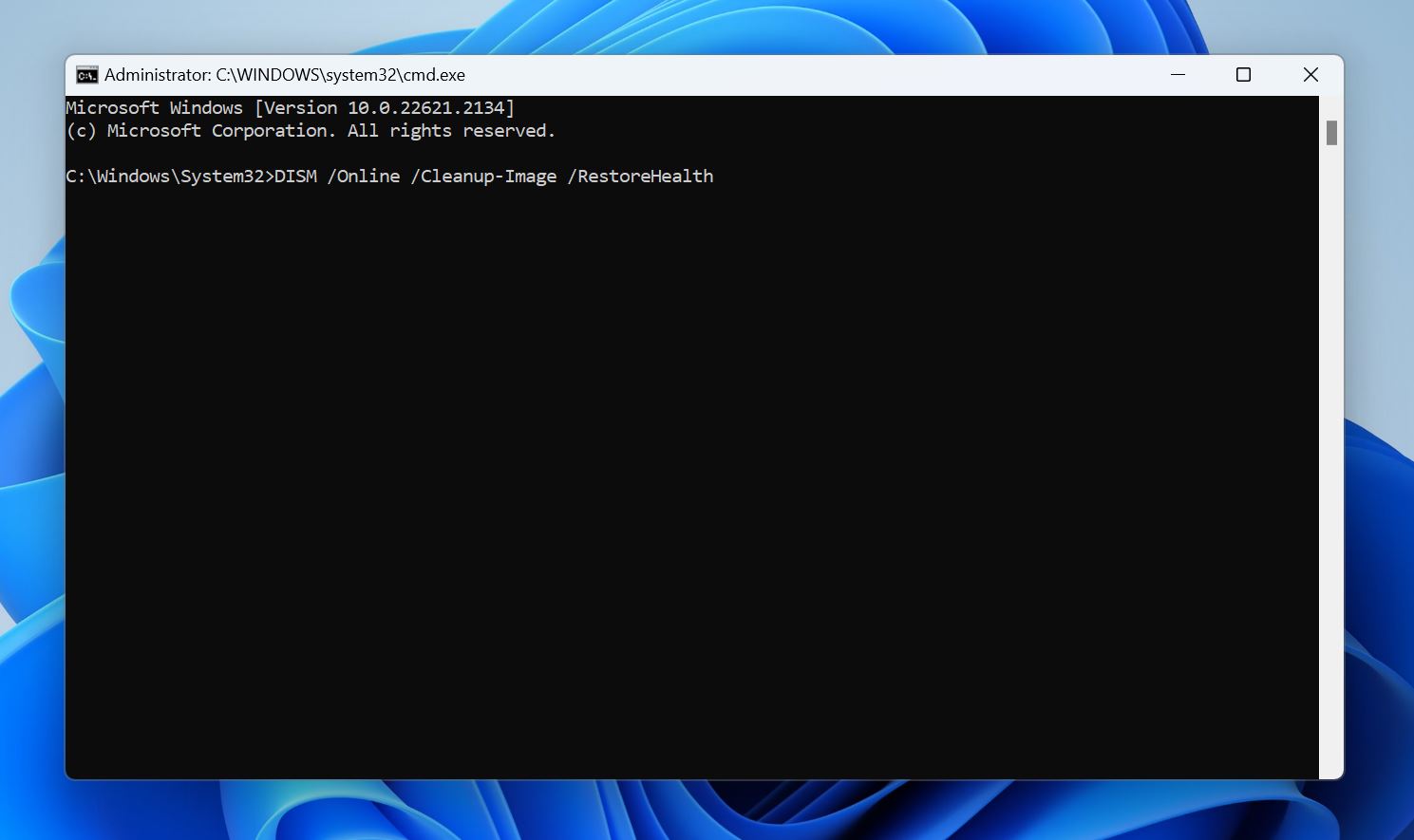
- Once DISM has repaired the Windows image, type
sfc /scannowand press Enter to begin the SFC scan.
- Wait for Windows to find and repair corrupt system files. Reboot your PC after the process is complete.
Method 2: Use System Restore
System Restore lets you roll back Windows to an earlier state. It lets you undo any unintended changes you made to the Registry and other Windows settings, potentially fixing a corrupt OS. However, for this to work, the feature should’ve been enabled beforehand and there should be a Restore Point that saved a snapshot of Windows before the Registry was modified.
You can use System Restore when Windows is in Safe Mode, or from the Windows Recovery Environment (WinRE). Here’s what the process looks like:
- If Windows is in Safe Mode, search for “system restore” in Windows Search (Windows Key + S) and click on Create a restore point from the search results. Click System Restore in the next window. If you’re in the Windows Recovery Environment (WinRE), click on Troubleshoot > Advanced options > System Restore to launch the System Restore wizard.
- Click Next on the System Restore wizard welcome screen.

- Choose the required Restore Point and click Next.

- Click on Finish to begin the restore process.
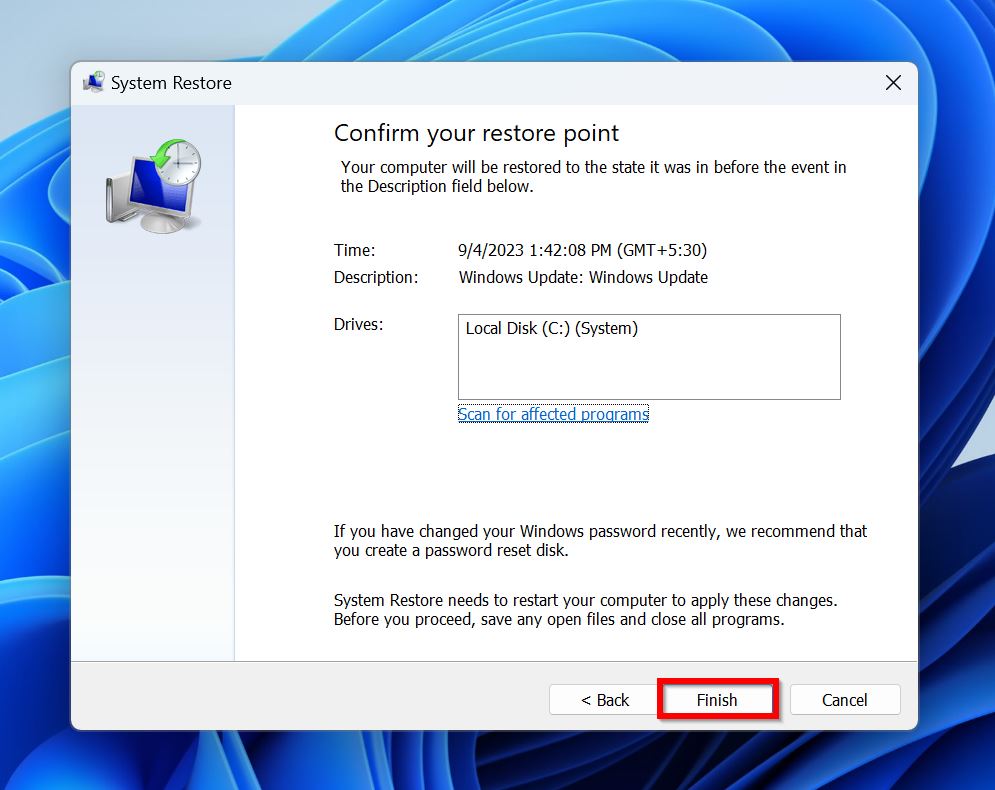
Note: It’s a common misconception that System Restore can recover deleted personal files. It can’t. You will need to use a data recovery program to get back any data that was lost.
Method 3: Reinstall Windows
If neither of the options above helped you, the best bet is to reinstall Windows. Fortunately, you can reinstall Windows without losing any data. Even if you do lose your files, you can use a good data recovery program to get them back.
You can either use the Windows Reset Option (if Windows is booting normally), or the Windows Recovery Environment (WinRE) to reinstall the OS. We’ll take a brief look at both the methods below.
Reinstall Windows Using the Reset Option
- Right-click on the Start button and choose Settings.
- Click on the Recovery option.

- Click on the Reset PC button, in the Reset this PC section.

- Choose whether you want to keep your files, or remove everything.
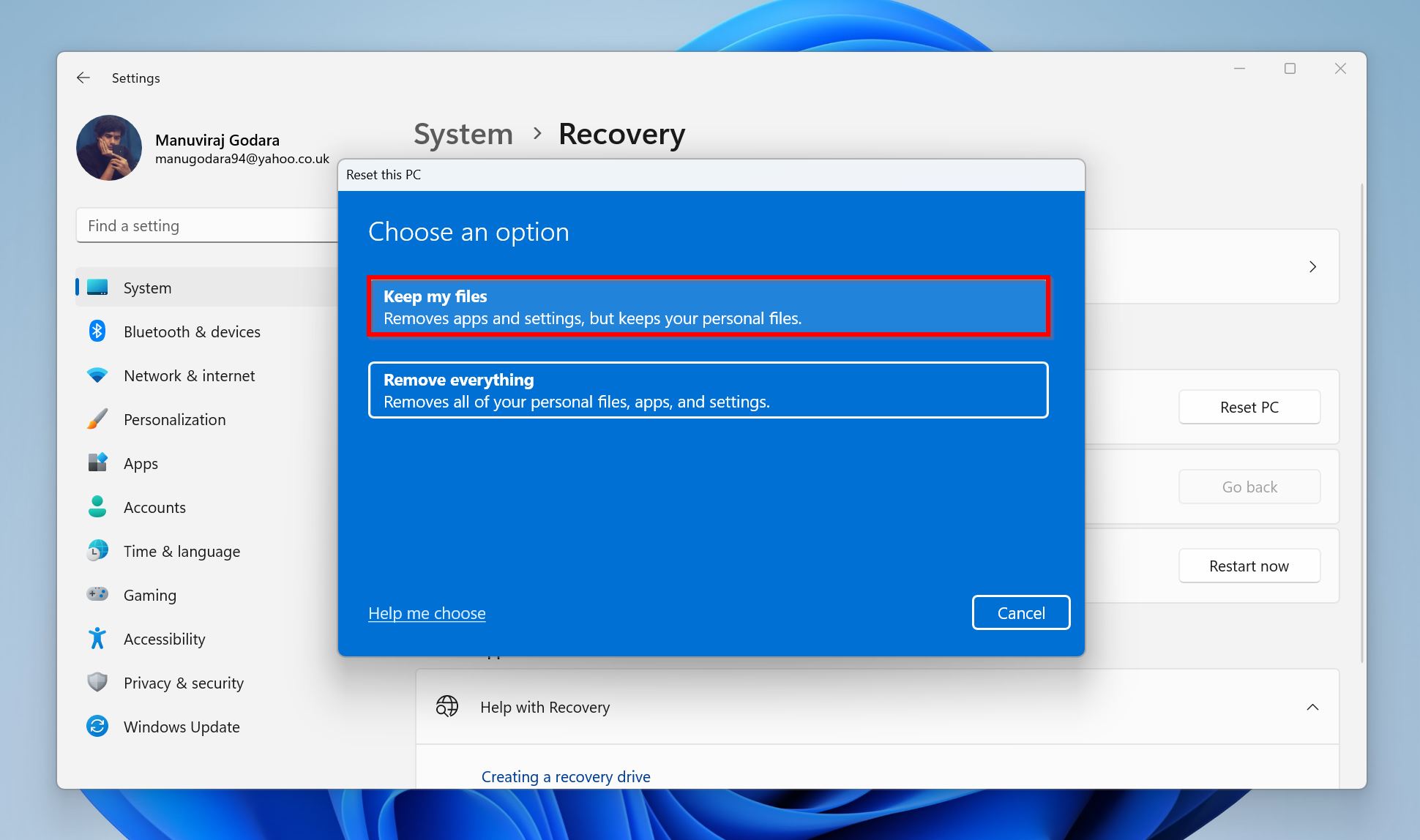
- Click on Local reinstall.
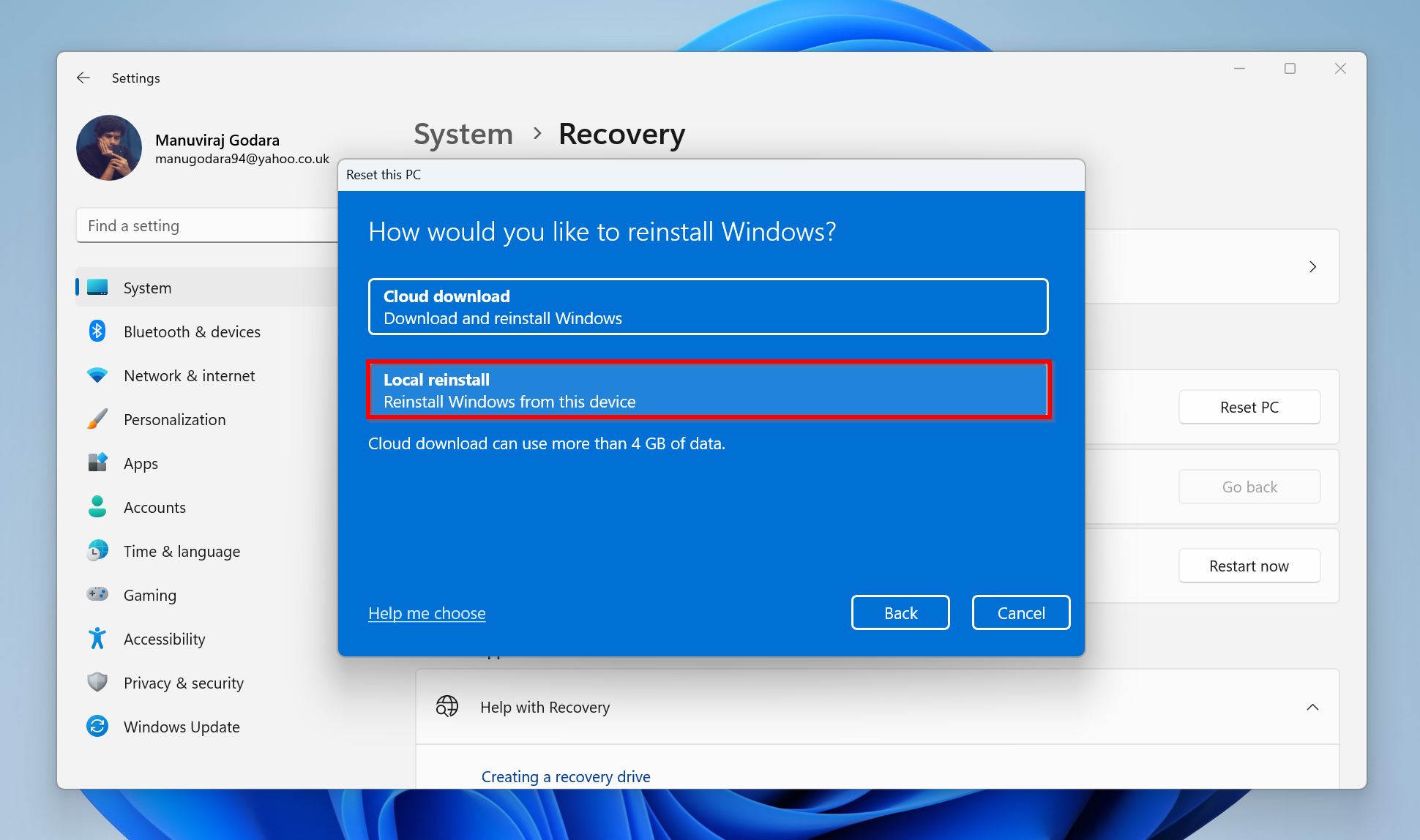
- Click on Next.
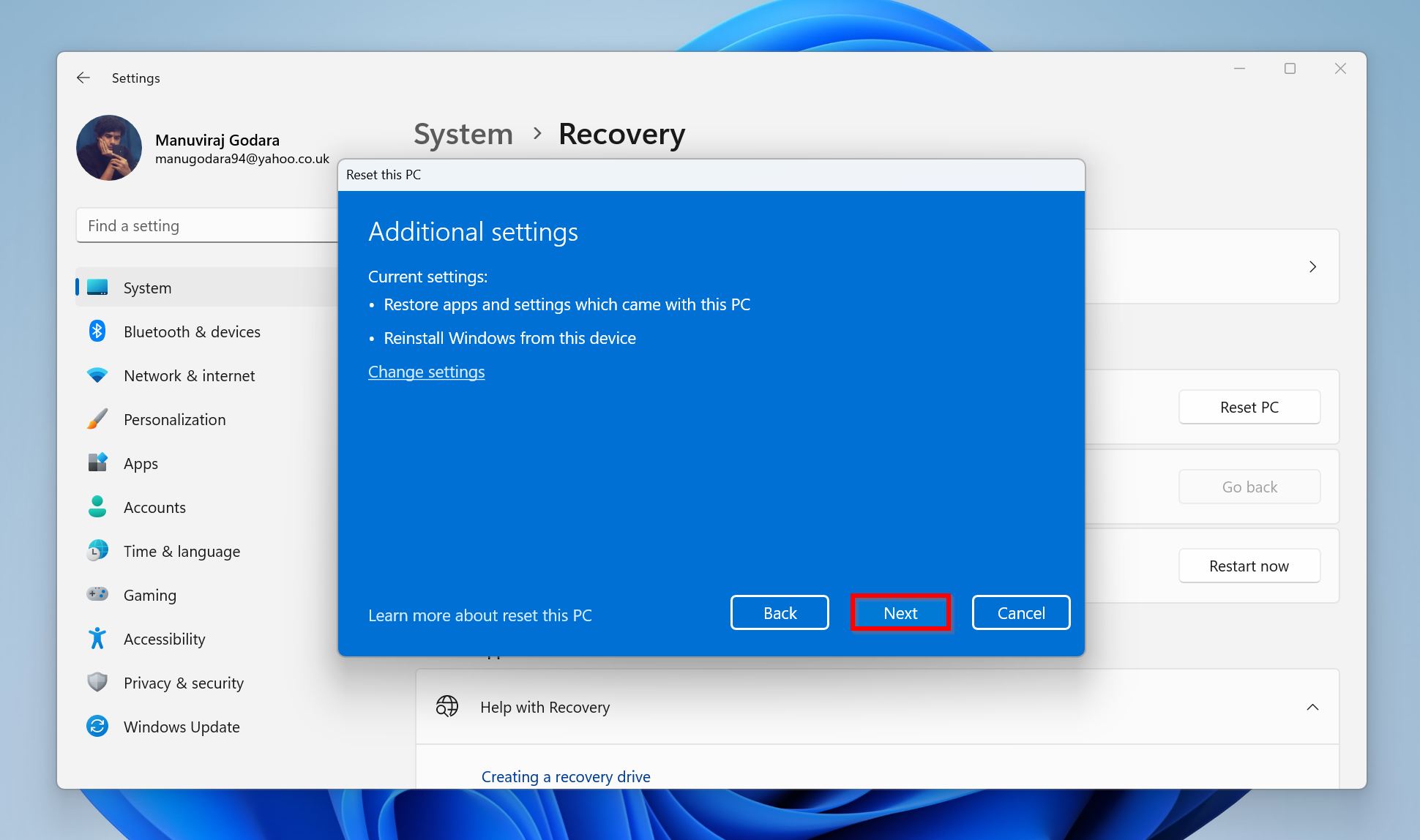
- Click on Reset to begin the reinstallation process.

Reinstall Windows Using the Windows Recovery Environment (WinRE)
- Boot into the Windows Recovery Environment (WinRE).
- Click on Troubleshoot > Reset this PC.
- Choose the Keep my files option. Note that this will only preserve the files in your user library folders (Pictures, Documents, Videos, etc.).
- Click on Local reinstall.
- Click on Reset.
- Choose the options in the following prompts according to your needs.
If you’re unable to boot into Windows Recovery Environment (WinRE), create Windows installation media using another PC, connect the media to your computer, boot it, and follow the instructions in the Windows installation wizard.
How to Recover Data After Fixing the Corrupted OS
You may notice some of your personal files are missing after you fixed Windows. This can occur because of the reason that caused corruption (such as malware) also deleted some of your personal files. In rare cases, the fix itself may have caused data loss.
Luckily, you can get your files back using a good data recovery program. But, you need to act swiftly and avoid writing new files to your PC’s internal storage if you want to maximize the chances of a complete data recovery.
In our data recovery tutorial, we opted for Disk Drill—an adept and easy-to-use data recovery tool that’ll let you recover data from the corrupted OS, in a few clicks. The program is compatible with all major file systems like NTFS, FAT32, exFAT, and more. It also lets you preview files before recovery, ensuring you get back the correct files.
Here’s how to use Disk Drill and recover data after you fixed the corrupt OS:
- Download Disk Drill and install it. We recommend you do this on a different storage drive.
- Open Disk Drill, select your computer’s internal HDD/SSD, and click Search for lost data.

- Click on Review found items to view all recoverable files. Alternatively, you can filter out the results by clicking on the relevant file type tile (Pictures, Video, Audio, Documents, Archives, and Other).
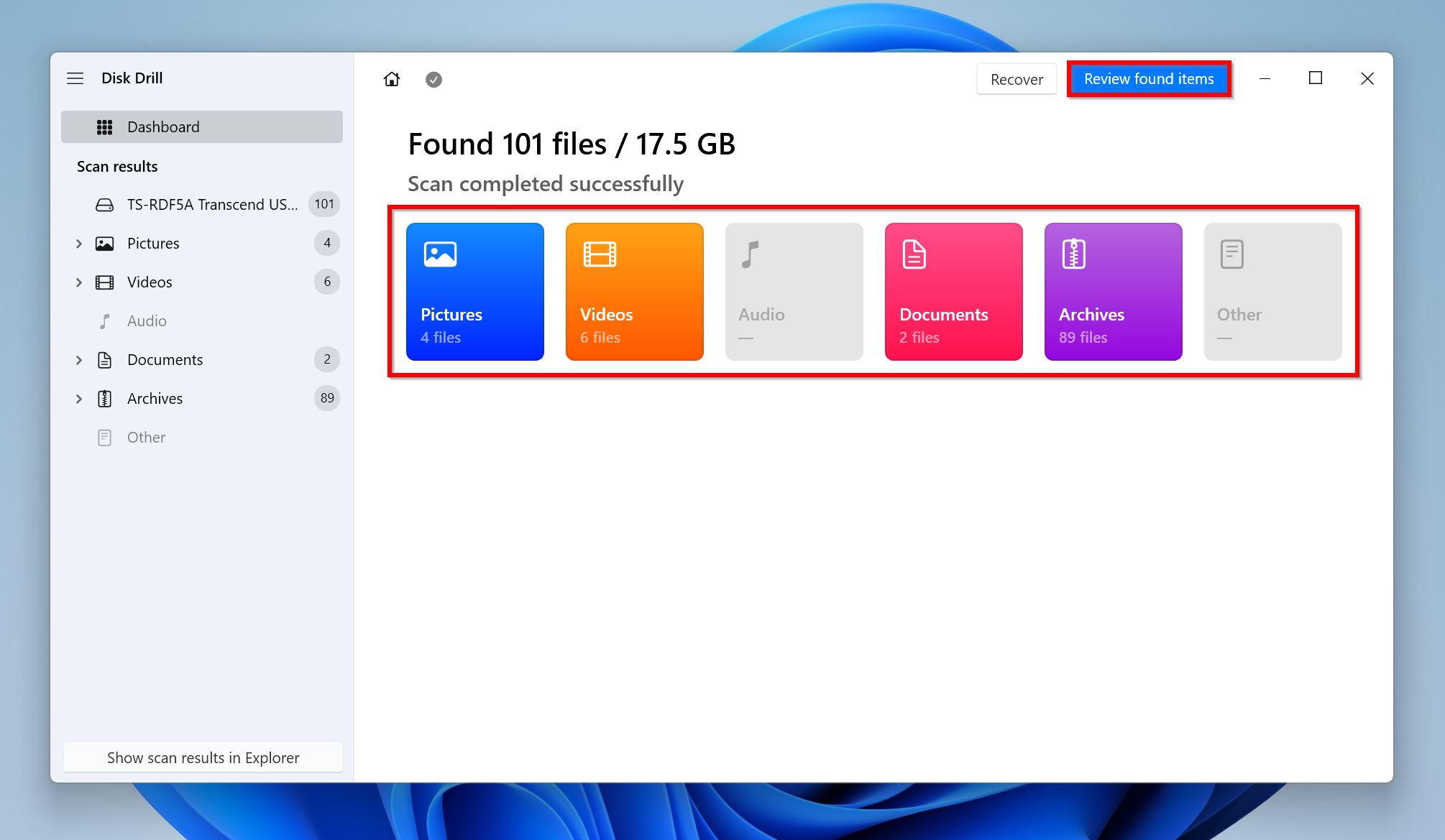
- Expand the Deleted or lost and Reconstructed sections to view deleted files that are recoverable.
- Select the files you wish to recover and click Recover. Disk Drill will automatically display a preview of the currently selected file, but you can manually preview any file by clicking the eye icon next to its filename.
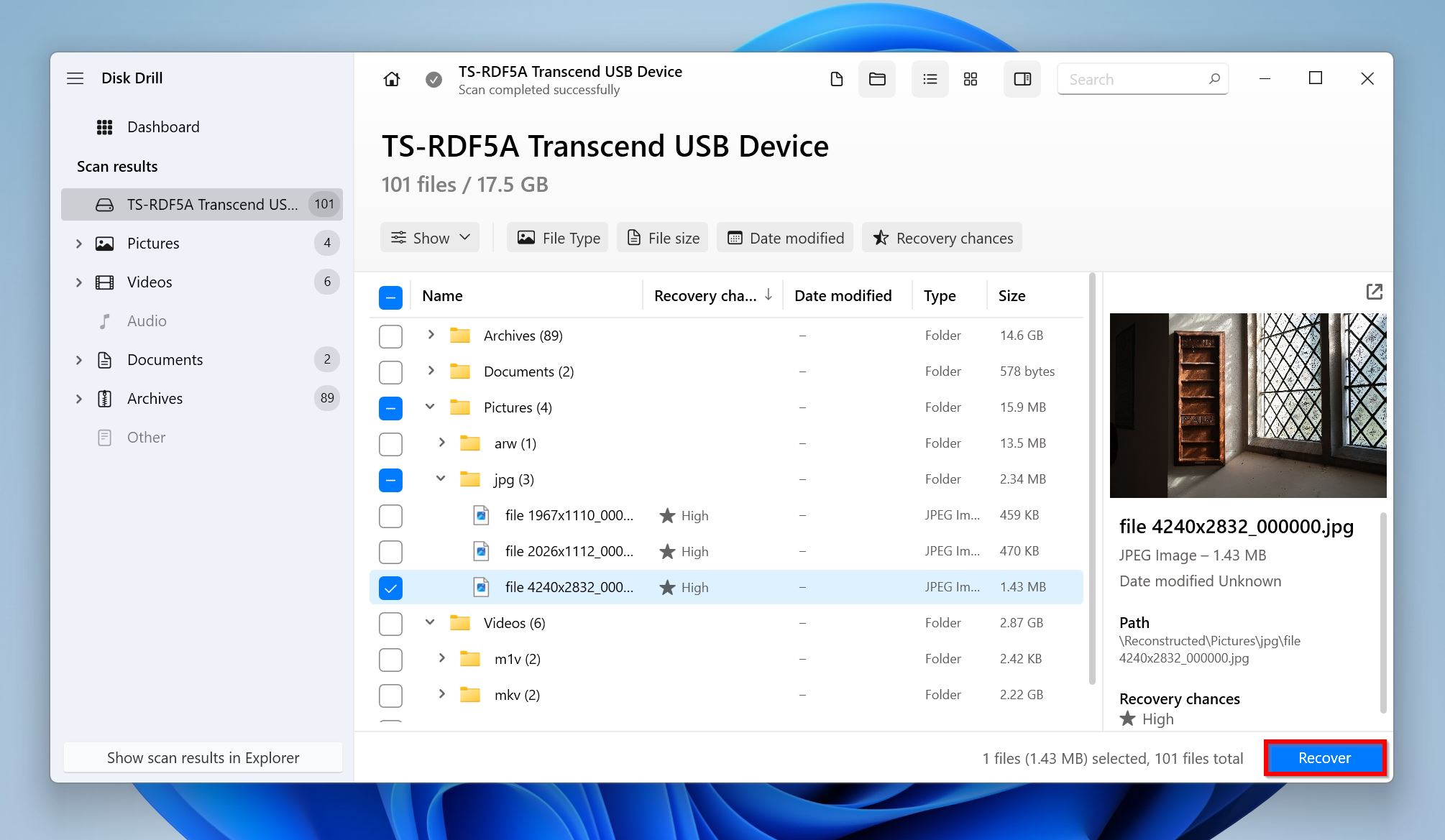
- Choose a recovery destination and click Next.

- Disk Drill will recover the selected files. You can recover up to 500 MB of data for free, as part of the Disk Drill for Windows trial.
Conclusion
Factors like malware attacks and a corrupt System Registry can lead to a corrupt Windows OS. However, you can easily undo this corruption by using the SFC and DISM utilities, System Restore, and Windows reinstallation. You will likely lose some of your personal data–because of the corruption, or the fixes you employ to fix it. In this case, it’s best to use a capable data recovery program to get your files back.
FAQ
- Frequent Blue Screen (BSOD) errors.
- Windows refuses to boot.
- Random freezes and restarts.
- Windows boots into the Windows Recovery Environment (WinRE).
- Run the Command Prompt as Administrator.
- Type DISM /Online /Cleanup-Image /RestoreHealth and press Enter.
- Type sfc /scannow and press Enter.




